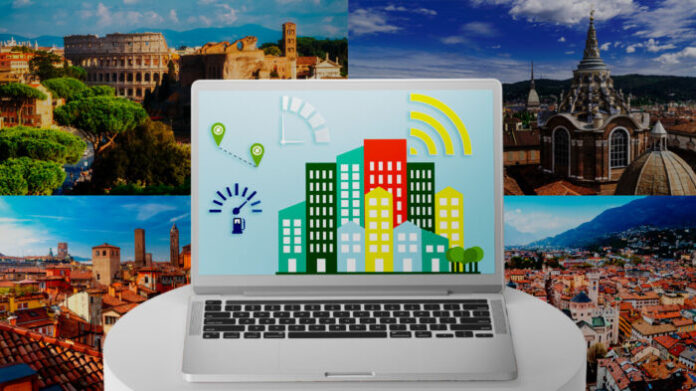
“In our country, approximately one person in two owns a car, i.e. 666 cars for every 1,000 inhabitants, a figure that puts Italy in second place in Europe for the highest motorisation rate, after Luxembourg,” explains Roberta Roberto, ENEA researcher in the Energy Technologies and Renewable Sources Department and co-author of the survey, together with colleagues from other areas of the Agency Bruna Felici, Alessandro Zini and Marco Rao.
In Italy, transport is responsible for more than 25 per cent of total national greenhouse gas emissions and almost all of them (93 per cent) come from road transport, with cars taking the ‘lion’s share’ (70 per cent). “Agile working and all other forms of remote working, including smart working, have shown that they can be an important tool for change capable not only of improving the quality of professional and personal life, but also of reducing traffic and city pollution and revitalising entire peripheral areas and neighbourhoods considered dormitory,” Roberto adds.
According to the answers of a sample[3] of 1,269 agile PA workers in the four cities surveyed, who use private internal combustion vehicles for their home-work journeys, each day of remote working would avoid 6 kg of direct CO2 emissions into the atmosphere and save 85 megajoules (MJ) of fuel per capita. But the environmental benefits do not stop there: the analysis also showed a reduction in nitrogen oxides per person per day (from 14.8 g in Trento to 7.9 g in Turin), carbon monoxide (from 38.9 g in Rome to 18.7 g in Trento) and PM10 (from 1.6 g in Rome to 0.9 g in Turin), PM2.5 (from 1.1 g in Rome and Trento to 0.6 g in Turin). In addition, for non-work trips on smart working days 24.8% of the sample said they had opted for more sustainable modes of transport (public transport, walking or cycling), 8.7% had changed their choices in favour of private transport, while 66.5% had not changed their mobility options.
“We chose these four cities for two reasons: the first concerns their peculiarities linked to their territory and historical profile, which suggest different impacts on urban mobility, while the second – and also the most practical – lies in the high number of answers to the questionnaire we received from the civil servants of these four cities, who on average work from home two days a week,” emphasises Bruna Felici, ENEA researcher in the Studies, Analysis and Evaluation Unit.
The data shows that on average, the sample covers 35 km per day for a duration of 1 hour and 20 minutes. Rome is confirmed as the most critical city, with an average travel time of 2 hours, probably due to the longer distances (1 Roman worker out of 5 travels more than 100 km a day) and the heavier traffic. In fact, in the capital there are about 420,000 daily trips for work and study purposes, while each person spends 82 hours a year in traffic.
About half of the sample declares that they travel exclusively by private motorised transport (47% by car and 2% on two wheels), while 17% travel exclusively by public transport and 16% by a mix of public/private transport. Trento is the city with the highest use of private motorised transport for home-work journeys (62.9%), followed by Rome (54.4%), Bologna (44.9%) and Turin (38.2%). “Private mobility offers flexible solutions in terms of time savings and autonomy of movement, especially for those who have children of school age. Public transport, on the other hand, is chosen mainly with a view to saving money or in the event of a lack of parking spaces,” concludes Alessandro Zini, ENEA researcher from the Studies, Analysis and Evaluation Unit.



































